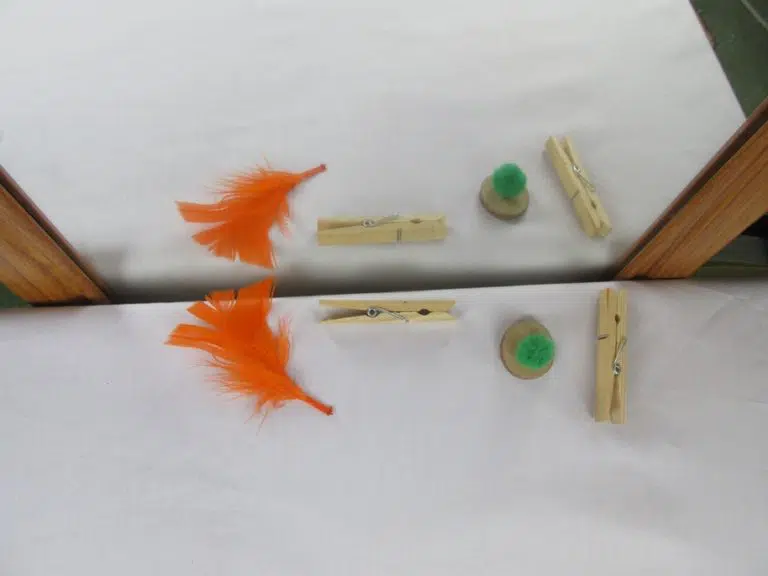Mirrors (small, shatterproof mirrors are best for safety)
Cardboard boxes or other sturdy supports to hold mirrors upright
Drawing paper, pencils, and markers
Loose parts for building (e.g., corks, bottle tops, feathers, pompoms, wood slices, leaves, bolts, pebbles)
Introduction:
Explain the concept of symmetry and how it can be observed using mirrors.
Show examples of symmetrical objects and how mirrors can reflect and create symmetrical images.
Setting Up:
Attach mirrors securely to the side of cardboard boxes or another sturdy support.
Place drawing paper, pencils, markers, and loose parts nearby for easy access.
Exploring with Mirrors:
Encourage children to build or draw next to the mirror, observing how their creations are reflected.
Start with simple designs, such as half a face or half a butterfly, and watch how the mirror completes the image.
Creating Symmetrical Designs:
Have children create half of a design on one side of the paper or with loose parts next to the mirror.
Guide them to observe how the mirror reflects and completes their design, making a symmetrical image.
Allow them to experiment and create their own symmetrical patterns, adjusting as needed to ensure symmetry.
Discussion and Reflection:
Ask the children to share their creations and describe how the mirror helped them create symmetrical designs.
Discuss how symmetry can be found in everyday objects and nature.
Gallery Walk:
Arrange the symmetrical designs in a display area and have the children do a gallery walk to observe each other’s creations.
Encourage them to identify symmetrical elements in the designs they see.
Difficulty Levels:
Preschool to Kindergarten: Focus on simple patterns with fewer elements. Provide more guidance and support.
Grade 1: Introduce more complex patterns with additional elements. Encourage independent creation and problem-solving.
Grade 2: Challenge children to create intricate and detailed symmetrical patterns. Foster creativity and exploration of advanced symmetrical designs.
What Happened?
Children created symmetrical designs using mirrors, developing an understanding of symmetry through hands-on activities.
They practiced fine motor skills, spatial awareness, and creativity by designing and completing patterns.
The activity provided a visual and engaging way to explore geometric concepts.
Explore More:
Create symmetrical drawings or models using paint and paper.
Use mirrors to explore symmetry in real-world objects and nature.
Incorporate symmetry into other subjects, such as making symmetrical patterns in music or dance.
Extension Activities:
Create symmetrical drawings or paintings using paint and paper.
Use mirrors to explore symmetry in real-world objects and nature.
Incorporate symmetry into other subjects, such as making symmetrical patterns in music or dance.

